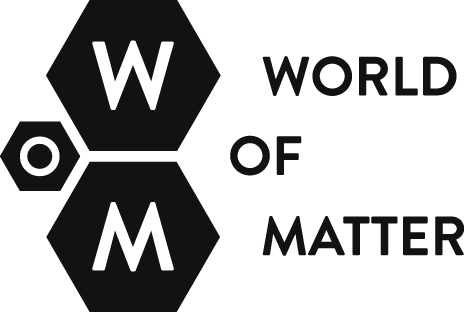There are a number of quarries in the Occupied Palestinian Territories that are solely owned by Israelis entrepreneurs who have purchased land from Palestinians, often under duress. Palestinians are employed as workers in these quarries but under extremely compromised conditions of work. This is because tthese Israeli owned quarries are in Area C, and are under both military and administrative control by Israel. The Israeli authorities such as the government ministries, the safety bureaus and the Society for Protection of Nature all claim they are restricted in their roles beyond the Green Line and often do nothing at all. What results is a hands-off policy that makes the area a No Man’s Land for workers’ rights with a complete disregard for job and safety conditions and no pay slips or proper insurance for work accidents.
In her detailed and authoritative research Violet Qumsieh outlines how a land grab of the quarries occurred in the years up to 1998.
The Israelis have confiscated an area of at least 18,700 dunums [approx 78 acres] (1) in the West Bank to construct seven quarries, in various locations. The largest is the Wadi Al-Teen quarry in the Tulkarem district, on an area of 9,685 dunums. In the Ramallah district, an Israeli quarry is located near Kufr Malik village, on a 2,523-dunum area. Israel plans to construct another quarry in the Ramallah district on land belonging to the villages of Rantis and Shuqba. In the Hebron district the following areas have been confiscated for quarries: 1,744 dunums between Dura and Al-Thahiriya; approximately 2,677 dunums from Tarqumiya, Dura and Khirbet Jamroura villages; and 2,077 dunums of land belonging to the village of Surif. Lastly, a quarry is located on land which belongs to Majdal Bani Fadel village in the Nablus district. (2)
We can assume that the extent of this land grab has become more pronounced in the last twelve years as Israel shifts from seeing the West Bank as a region to be pacified to treating it as a region to be exploited – not least because Israel has very few quarries within its own borders so relies heavily on the material excavated in the West Bank quarries for the building of illegal settlements in the Occupied Palestinian Territories and the construction industry within Israel (Israel also expropriates Palestine’s other natural resource, water; either just taking it or selling it back to Palestine and using the West Bank as a waste and dumping ground) (3). There are also strict laws in Israel governing the noise and dust levels produced by quarries inside Israel. However in the West Bank, with the Palestinian Authority unable to enforce environmental or labour laws because Israel controls the territory, Israeli mining companies are able to operate with greater ease.
The Natauf quarry is 400 meters from the village of Shuqba, Ni’ilin and a few kilometers from Green Line. The quarry is owned by an ex Israeli officer who was stationed in the Occupied Palestinian Territories for many years and is familiar with many local Palestinians. Some of the local inhabitants from the village staged a number of non- violent protests against the quarry in July 2011 against the use of explosives in the quarry. Because of the close proximity of the quarry to the village the vibrations from the explosives are damaging Palestinian homes, schools and businesses. (Palestinian owned quarries are not permitted to use explosives). However many of the protestors were arrested late at night and taken to Ofer Prison, an Israeli incarceration centre prison in the West Bank between Ramallah and the Israeli settlement Giv’at Ze’ev. According the local people and a schoolteacher that I interviewed because the Israeli owner of the quarry knows many of the local inhabitants from his military days he had complied a list of names of villagers and orchestrated their arres
Below is a report on the demonstration by the Palestine Solidarity Project.
http://palestinesolidarityproject.org/tag/nili
Live Ammunition Fired at Shuqba Demonstration
On 1st July 2011 demonstrators from Shuqba, Ni’ilin, and other surrounding villages in the Ramallah District gathered for the 4th demonstration in recent weeks. The group included about 50 Palestinians, 2 Israelis, and 3 Internationals. A rock quarry that was constructed as part of an Israeli settlement on Shuqba farmland formerly containing olive trees was the target of the demonstration. As the participants descended down a steep rocky hill adjacent to the quarry, Israeli military began to fire volleys of tear gas into the crowd. Dozens of canisters were fired over the course of an hour, igniting fires that scorched large swaths of land surrounding the quarry and continued to burn even after the demonstration ended. As those gathering at the quarry began to make their way back to the village of Shuqba the soldiers began to fire live ammunition from automatic weapons into the air sending the lingering Palestinian youths running for cover.
- (1) 1 dunum = 0.24 acres.
- (2) Violet Qumsieh, The Environmental Impact of Jewish Settlements in the West Bank (Applied Research Institute – Jerusalem, 1998) <http://www.arij.org/publications%282%29/papers/1998%20The%20Environmental%20Impact%20of%20Jewish%20Settlements%20in%20the%20West%20Bank.pdf > [accessed 3 September 2013].
- (3) Although there is a rich water supply within the West Bank Palestinians are not permitted to access the natural water reserves through wells or any other means. Israel has complete control of the water resources after the Palestinian Authority’s signing of the Oslo Accords acceding to Israel’s demand that they not dig further than 500 metres down into the West Bank – a depth too shallow to reach water. Israel thus ciphers the water from the West Bank into Israel and sells water back to Palestinians at a high rate (including tax). While Jewish settlements in the OPT and Israel have swimming pools and cultivate manicured lawns and gardens, Palestinians are restricted to quotas of water for each household and business.


